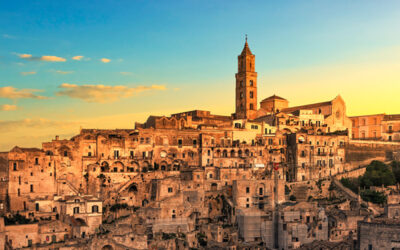
Article
Free Royal Mail 48 postage on UK orders. European postage is £3.50 per item. Worldwide postage is £5.50 per item. If you're not happy with your purchase for any reason, we'll give you a full refund.
More information...
This guidebook offers 23 walking routes across the 120km Karavanke mountain range, a natural border between Austria and Slovenia. The one and two-day routes are graded for difficulty, and range from low-level walks to high summits. The approaches are mainly from the Slovenian valleys, with bases in unspoilt towns and villages.
Free Royal Mail 48 postage on UK orders. European postage is £3.50 per item. Worldwide postage is £5.50 per item. If you're not happy with your purchase for any reason, we'll give you a full refund.
More information...
A guidebook to 21 day walks and 2 multi-day treks in Slovenia’s Karavanke. Exploring the 120km mountain range between Slovenia and Austria, the walks are suitable for beginner and experienced hikers alike.
Walks range from 4 to 26km (2–16 miles) and can be enjoyed in 2–9 hours. Two 2-day walks with overnight mountain hut stays are included taking in the Košuta ridge and Peca massif.
Overview map of Slovenia
Overview map of the Karavanke
Map key
Introduction
Landscape and geology
Climate and weather
Environment
Wildlife and flowers
The walks
When to go
Getting there
Travelling within Slovenia
Accommodation
Food and drink
Money and shopping
Communications
Health and hazards
Language
Maps
Waymarking
Equipment
Using this guide
The Western Karavanke
Walk 1 Peč (Tromeja)
Walk 2 Trupejevo poldne and Vošca
Walk 3 Kepa
Walk 4 Dovška Baba
Walk 5 Hrušica to Planina pod Golico
Walk 6 Golica
Walk 7 Hruški vrh and Klek
Walk 8 Dovška Baba to Planina pod Golico
Walk 9 Ajdna
Walk 10 Stol
Walk 11 Vajnež
Walk 12 Stol from Austria
Walk 13 Dobrča
Walk 14 Preval
Walk 15 Begunjščica
Walk 16 Vrtača
Walk 17 The Ljubelj Pass
Walk 18 Košutica
Walk 19 Košuta
The Eastern Karavanke
Walk 20 Hochobir (Ojstrc)
Walk 21 Olševa
Walk 22 Peca
Walk 23 Uršlja gora (Plešivec)
Appendix A Walk summary table
Appendix B Key names in German
Appendix C Glossary
Appendix D Useful contacts
Appendix E Further reading
The walks are almost all covered by three maps:
Frustratingly, the first half of Walk 23, Uršlja gora, is on a different map, Pohorje 1:50,000. The maps are published by PZS (Planinska zveza Slovenije – the Slovene Alpine Club) except for Kranjska Gora, which is published by LTO Kranjska Gora.
The Karavanke website has a free map of the range which can be printed out: go to www.karavanke.eu/index.php?t=news&id=19&l=sl. This has the full route of Uršlja gora on it.
Note that the sketch maps that accompany the route descriptions in this guide are not intended to be used alone, but to provide orientation to the sheet map.
We do not yet have any updates available for this book
We are always grateful to readers for information about any discrepancies between a guidebook and the facts on the ground. If you would like to send some information to us then please use our contact form. They will be published here following review by the author(s).
Justi Carey and Roy Clark started visiting the British mountains in their teens, a discovery which has shaped their whole lives. Their passion for the outdoors has since led to travels across the world and a deep commitment to the environment, while their continuing interest in being 'out there' has resulted in an enthusiasm for skiing, canoeing, cycle touring, horse riding and even rollerblading! Since moving to Slovenia in 2002, Justi has worked as an English teacher, while Roy has developed his skills in landscape photography. They now run a Bed and Breakfast in the mountainous north-west corner of Slovenia.
View author profileJusti Carey and Roy Clark started visiting the British mountains in their teens, a discovery that has shaped their whole lives. Their passion for the outdoors has since led to travels across the world and a deep commitment to the environment, while their continuing interest in being 'out there' has resulted in an enthusiasm for skiing, canoeing, cycle touring, horse riding and even rollerblading! Since moving to Slovenia in 2002, Justi has worked as an English teacher, while Roy has developed his skills in landscape photography. They now run a Bed and Breakfast in the mountainous north-west corner of Slovenia.
View author profile